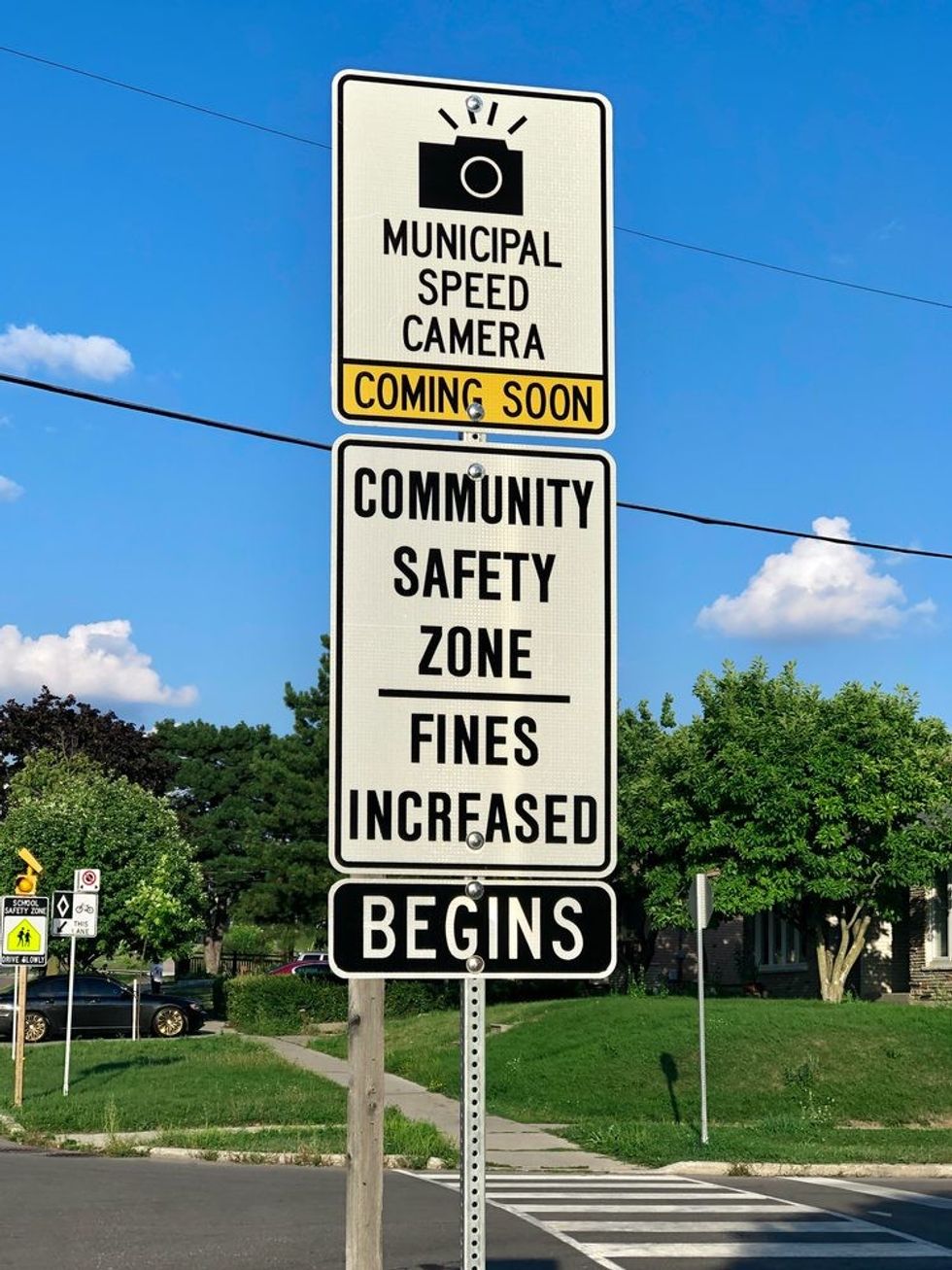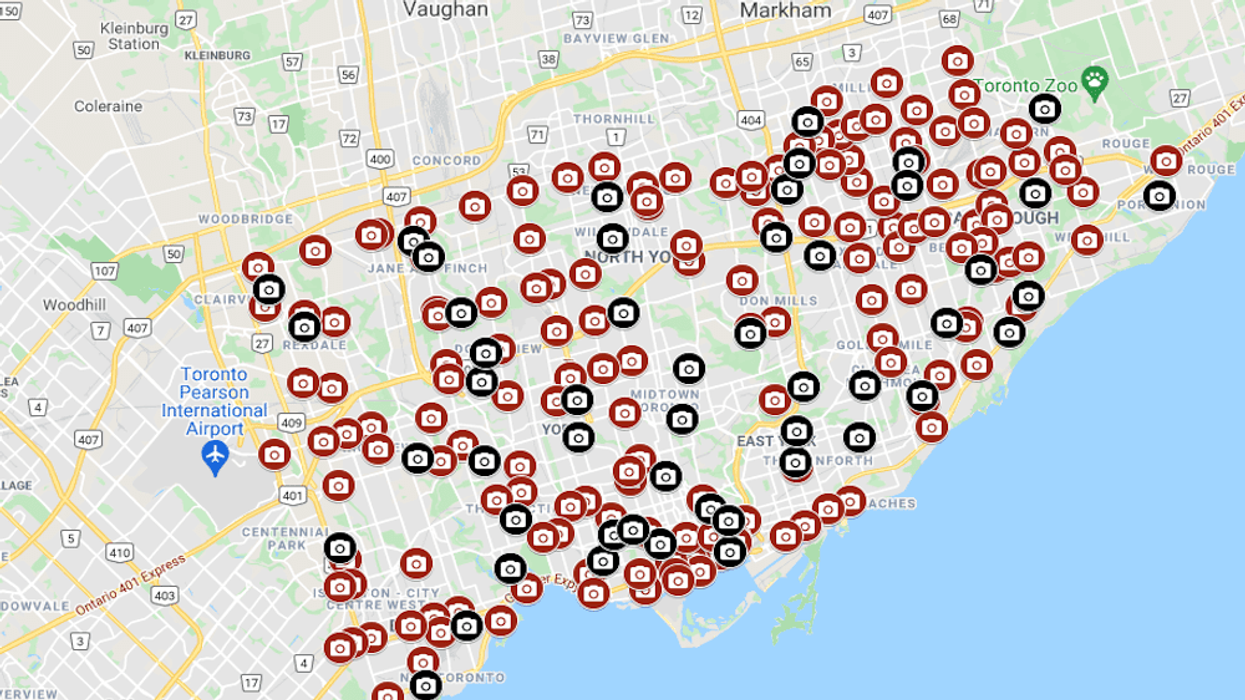Despite the City's efforts to curb speeding throughout Toronto, dangerous and reckless driving continues to be one of the city's most dangerous traffic safety issues.
To stop the drivers who continue to take advantage of Toronto roadways -- whether speeding through Community Safety Zones near schools or driving through red lights -- the City has introduced a mix of automated speed enforcement (ASE) cameras and red light cameras.
Today, you'll find hundreds of traffic and speed enforcement devices throughout the city, including 50 ASE cameras and more than 150 red light cameras.
“Automated Speed Enforcement is one example of the data-driven actions we are taking to achieve our Vision Zero road safety goals," said Mayor John Tory. "This is about making our roads safer and saving lives. I’m confident the program will help slow drivers down in zones where children and older adults are likely to travel.”
READ: Everything You Need to Know About Toronto’s New Speed and Red Light Cameras
The ASE camera locations were selected based on data that indicates where speed and collisions have been a problem in Community Safety Zones near schools. And for those caught travelling more than the posted speed limit in an ASE-enforced area, the fines aren't cheap.
An individual caught speeding between 1 and 19 km/h over the posted speed limit will receive a set fine of $5 per kilometre. If travelling between 20 and 29 km/h over the posted speed limit, the set fine will be $7.50 per kilometre. For anything between 30 and 49 km/h over the limit, the set fine will be $12 per kilometre.
For example, if a vehicle is detected speeding 49 km/h over the posted speed limit, the total payable fine would be $718. This includes a set fine of $588, a victim surcharge of $125 and $5 inapplicable court costs.
Speeds of 50 km/h or more over the posted speed limit will not be eligible for settlement outside of court. A summons will be issued to the registered vehicle owner to appear before a Justice of the Peace.

On the other hand, red light cameras capture an image of a vehicle that has entered an intersection despite the traffic signal indicating red (during the red phase). Generally, the camera is triggered when a vehicle enters the intersection (passes the stop bar) after the traffic signal has turned red.
Provincial Offence Officers review captured images, and then tickets are issued to the vehicle owner -- regardless of who was driving. Upon conviction, the only penalty is a fine -- no demerit points are issued, and the City says the registered owners’ driving record won't be impacted.
If the red light camera detects a vehicle for red-light running, the registered owner of the vehicle will receive a ticket that includes a Set Fine under the Provincial Offences Act ($260), a victim fine surcharge ($60), and applicable court costs ($5).

Data from the City shows that the cameras are working. According to the City, the speed cameras issued 75,270 tickets from July 6 to December 31, 2020, and 81,557 speeding tickets in the first three months of 2021. Nearly 80,000 (78,054) red light camera infractions were issued in 2020 alone.
To ensure that drivers know exactly where each red light and ASE camera is located, we’ve put together an interactive map that pins where all the cameras currently are in the city.
The red icons are the red light cameras, and the black icons indicate an ASE camera.





















